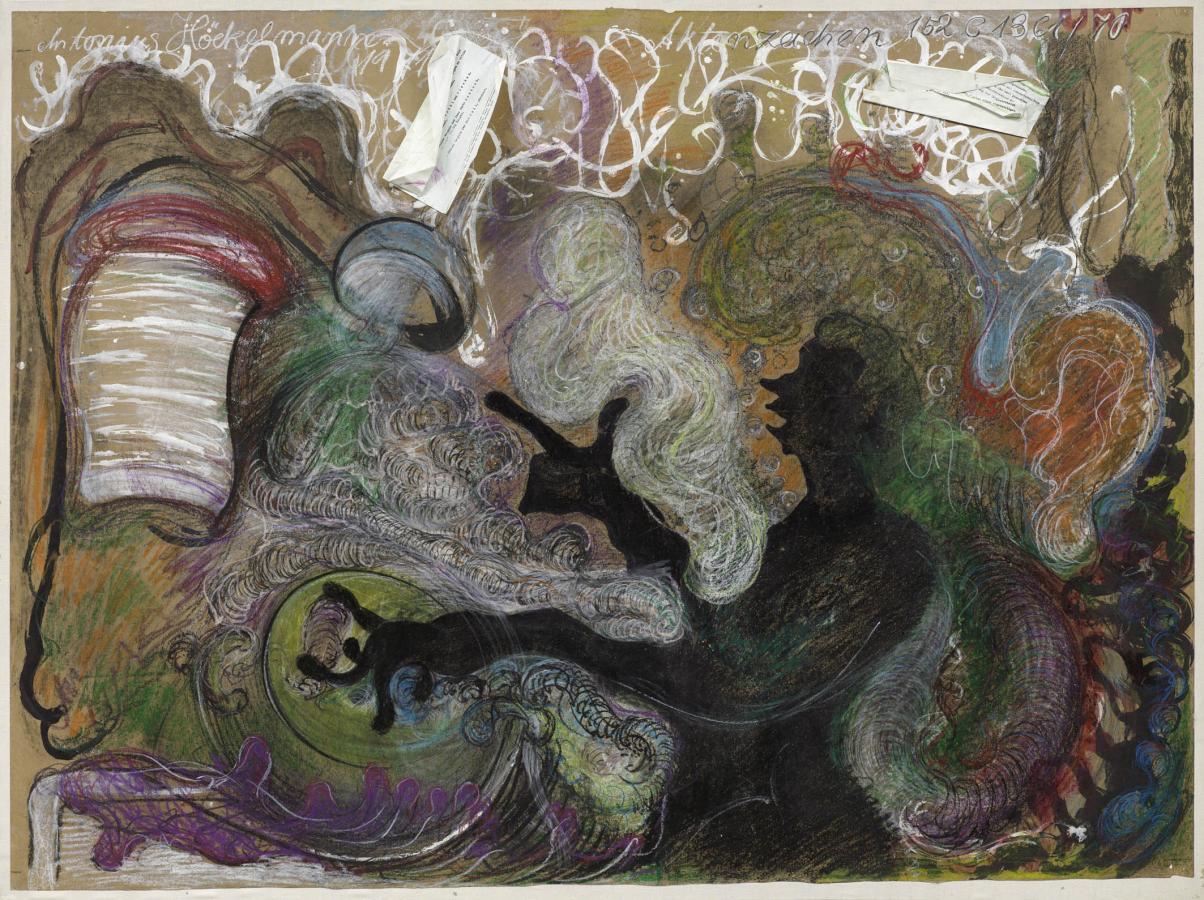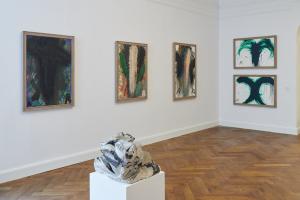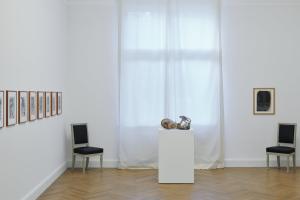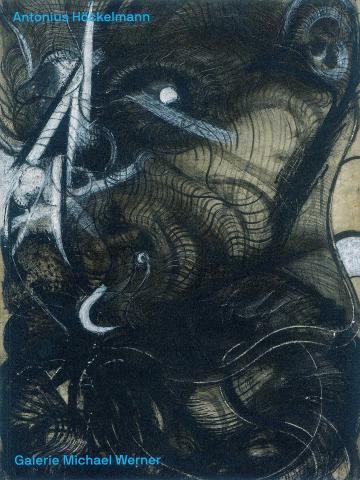Press release
Arnulf Rainer (born 1929) and Antonius Höckelmann (1937-2000) are connected by a common assertion towards the image. They formulate this assertion in different starting situations, which is why the points of contact intertwine all the more resiliently.
Rainer started from an extreme situation in the Vienna of the 1950s. Having blossomed around 1900 into a counterweight to the art center of Paris, the art scene of the Austrian capital was merely a stunted fringe on the Iron Curtain. Rainer was significantly involved in the reconstruction attempt in the circle around Monsignor Otto Mauer and the Galerie nächst St. Stephan. Paris and the last binding European painting style of the Informel nevertheless remained his liberating fluid. Its redeeming effect, however, confirmed the periphery of Vienna in relation to the center of Paris. In Vienna, however, Rainer tied the tools of Informel - gesture, chance, automatism of the hand - back to the picture. In 1954, he finally approached overpainting by way of filling, overfilling, and crushing, with which he remained. For the picture - by which is meant the occidental picture types from the nude to the portrait to the (painted) crucifix - was finally dissolved by Informel and even more generally by abstraction. What had often enough been scandalized as destruction in Rainer's works is, on the contrary, a strategy of preservation.
After training as a wood sculptor, Höckelmann, a native of Westphalia, exposed himself to the even more hopeless situation in West Berlin. Hopeless, because the walled enclave of the West was not touched by the last rays of sinking Paris nor already by those of the new art center New York. Höckelmann won his insightful independence from this genuine provinciality, which only ties in with similar Scandinavian modernist traditions because similar conditions prevailed there. Generationally, the examination of Informel recedes into the background here, while the contrast to the dominant Minimal Art and Conceptual Art now stands out - all the more so after Höckelmann's move to Cologne in 1978. This contrast becomes tangible in the organic, which permeates the motifs and also as ornamentation of his pictorial works. In Höckelmann's paintings and on his sculptures, the formally forbidden proliferates, and this almost lustfully.
If one now disregards the conventional interpretations, which continue to relate such pictorial striving to a methodology of madness, sexual compensation, or an activation of the unconscious, then both in Rainer and in Höckelmann that "stillless basic power" (Per Kirkeby) comes before one's eyes, which is to be celebrated as the real rarity in the art history of the 20th century. It expresses itself exclusively in manual processes of painting, because only there the style-forming compulsive character of any technique can be circumvented. Besides the criterion of style, however, this power also denies those of development or even progress. With incalculable consequential costs for the perception in the art business, both artists always seem to do the same thing over decades. But this is only another condition to make the "stillless basic force" into an assertion. Only what irritates art-historical taxonomy so persistently can grow into foundations of future possibilities for images.
In the juxtaposition, the similarity between Rainer and Höckelmann becomes apparent in this potential. Where the similarity seems to impose itself stylistically, it actually takes shape strategically. Namely, in the condensation of manual pictorial structures to the point of unbearability. The energies that oppress the formats counteract the horror vacui that is still rampant in contemporary visual culture: the terror of being inescapably surrounded by empty or even nonsensical images.




